Don't wanna be here? Send us removal request.
Text
MR10: Drug courts, mental health courts, and other speciality courts have gained popularity in the U.S. Do you think these courts are an effective alternative to incarceration? Why or why not?

Specialty Courts
Specialty courts, as opposed to regular courts, were established fairly recently, within the last 50 years with the exception of juvenile courts. They aim to approach specific crime types for the most part to better address the needs of the people in the criminal justice system.
Drug courts: The precedent for all specialty courts going forward was the first drug court in Dade County, Florida in the late 1980s for retaliation in the area for the drug scene (Hector & Khey, 2022). The people in drug courts need to plead guilty in order to be put through drug treatment programs including but not limited to random screening, drug treatment, and group therapy.
Mental health courts: There were different pioneered mental health courts within the United State, each focusing on different issues, such as homelessness, lapse in mental healthcare, and jail/prison overcrowding (Hector & Khey, 2022). To address the mental health issues, the people in these courts were placed in programs, often with controlled medication regimes to keep them out of crime and out of the correctional system.
Effectiveness
Yes, these specialty courts are overall effective as alternatives to incarceration. They are sometimes nicknamed problem-solving courts because of how they tackle the issues the offenders are facing, leveraging community resources to get at the source of the issues to make sure there is less of a chance of it happening again, unlike what was common with offenders in normal courts. Using foodbanks, housing, healthcare, and so much more, the former offenders were often more of a chance at life, more legitimate ways to live and not fall victim to recidivism.

Resources:
Hector, J. & Khey, D. (2022). Criminal Justice and Mental Health: An Overview for Students. 2nd Edition. Springer Publishing. ISBN: 978-3-031-15337-2
9 notes
·
View notes
Text
MR9: The U.S. Constitution mandates a “constitutionally acceptable level of care” for incarcerated individuals. Do you think this standard is being met in most jails? Why or why not?

Constitutionally Acceptable Level of Care
Originally defined in the Eighth Amendment of the Bill of Rights, there was a legal basis for sentencing/punishments to not be excessive, whether it's fines and/or pretrial bail not being excessive to the offender, and not allowing cruel and unusual punishments. As a result of lengthy legal battles regarding maltreatment/mistreatment in jails and prisons (42 U.S.C. § 1983, for example), precedents were created about the minimum standards requiring more enforcement in the operational level, made necessary as a result of deliberate indifference (Hector & Khey, 2022).
Some of the new components to meet the constitutional standards are as follows:
screening/evaluation programs for mental health
more care to mentally unwell inmates
employing more psychological/psychiatric professionals in the correctional system
more regulations of maintaining health/treatment records
proper administration of medication
suicide risk program

Jail Implementation
With the state of how jail populations have constant turnover rates and are overcrowded more often than they are not, it would be reasonable to infer that this legal minimum level of care is not properly upheld. Jails are, by definition, for pre-trial detention or for sentences that are less than a year long, so most of the monetary resources tend to go to prisons directly, as they require more long-term treatments. The jail correctional officers often do not have the proper training to deal with those with mental health issues, exacerbating the cycle of maltreatment/mistreatment within these facilities.
Resources:
Hector, J. & Khey, D. (2022). Criminal Justice and Mental Health: An Overview for Students. 2nd Edition. Springer Publishing. ISBN: 978-3-031-15337-2
5 notes
·
View notes
Text
MR8: Discuss the intersection of houselessness, mental health, and at-risk behaviors. What systemic changes and policies are needed to break this cycle?

Homelessness
Within the United States of America, there is a substantial amount of homelessness, particularly in big cities and suburbs. And when a decent proportion of the homeless have untreated/undiagnosed mental health concerns, this can put strain on both the individuals themselves and on society. The homeless population does tend to have worse physical and mental health compared to the general public (Patanwala et al., 2024). With relatively high percentages of substance use/abuse and anxiety/depression, it is clear that there are many ways to improve the lives for these misunderstood populations.

Common Problems and Solutions
Medical coverage is something that many people that live in the United States are lacking, even those with places to live. But, of course, when someone does not have a home and therefore lacks an address, their access to legitimate healthcare insurance is severely limited, including by the costs to afford it.
The Affordable Care Act did aid in making Medicaid more accessible to larger amounts of people, but those without meaningful employment still are unlikely to qualify for it, and the usage of Medicaid for mental health services has been on the decline (Hector & Khey, 2022). There should be further expansion of the ACA to include impoverished and homeless individuals as people who deserve proper insurace
Public housing is offered to those with difficulties finding places to live, but there are still guidelines in place to protect the other residents and to protect the property itself that may disqualify people from being able to obtain housing. Criminal records or history of mentally ill behaviors that ended in disruptions and/or destruction are two such factors that have helped perpetuate the homeless to stay without a home.
For those with criminal records, some halfway homes exist, but there should be a larger quantity of those programs, as well as more support between the programs and normal housing agencies, to prove that such individuals are stable and safe enough to live in normal society and be treated like anyone else
Resources:
Hector, J. & Khey, D. (2022). Criminal Justice and Mental Health: An Overview for Students. 2nd Edition. Springer Publishing. ISBN: 978-3-031-15337-2
Patanwala, M. Y., Garcia, C. M., & Kushel, M. (2024). Health care for people experiencing homelessness. JAMA, 332(1), 70-71.
10 notes
·
View notes
Text
MR7: How does access to care, or the lack thereof, come into play when discussing front-line interactions (police, EMS, ER, CIT personnel, etc.) with persons who have mental health concerns?

Frontline
Frontline interactions are of the utmost importance when it comes to mental health crises and criminal justice relations with the public. They are the first people that we come into contact with so the relationship should be amicable to promote the best public perception of such first responders.
Law enforcement: all agencies do go through types of training, including the Peace Officer Standards and Training, but there is not much cohesion between the mental health training across the United States, with some states requiring ample training like California but others requiring none like Louisiana (Hector & Khey, 2022, pg. 69)
Emergency Medical Services: EMS is for medical services, mostly to provide immediate physical treatment to tangible injuries or to transport persons with these injuries to medical facilities where here is more resources to properly treat them
Crisis Intervention Teams: CITs are teams built between law enforcement, mental health professionals, and greater communities in order to promote proper reactions to crises, both of the physical and mental health variety. This type of frontline is more productive because it is less punitive in nature and can help those in crisis feel more and more seen, rather than like they are in trouble for their mental health

Access to Care
One's access to care, or lack thereof, could easily change their life trajectory when they face mental health concerns. For example, people's financial situations are all unique and different, but there is a widespread sentiment that healthcare services are often too expensive for many to afford. This could severely limit their options when they are faced with frontline responders, whether it be ambulance costs or therapy costs. With their mental health concerns and a lack of proper care, this could just lead to their problems repeating, rather than being solved or treated.
References:
Hector, J. & Khey, D. (2022). Criminal Justice and Mental Health: An Overview for Students. 2nd Edition. Springer Publishing. ISBN: 978-3-031-15337-2
3 notes
·
View notes
Text
MR6: How can future studies improve the integration of mental health considerations into these theoretical frameworks?

Theories
Self-control theory is part of the general theory of crime, as proposed by Hirschi and Gottfriedson (1990), states that people with low self-control are generally more likely to commit crimes than those with high self-control. The tested components for levels of self-control are impulsivity, aggression, preference for simplicity, risk seeking, being more physically inclined than mentally inclined, and self-centeredness. Self-control is specific to individuals, making this a micro-level theory. And mental illness can impact each of these components, depending on the diagnosis.
Routine activities theory is the theory that there needs to be three main aspects to fulfill the ability to commit a crime: a motivated offender, a suitable target, and a lack of capable guardians (Cohen & Felson, 1979). Being a motivated offender means that someone wants to commit the crime; suitable targets are objects/people that the offender deems worthy of victimization; and capable guardians are a form of social control and supervision, so a lack would mean less likelihood of being caught prior to the incident.
Future Studies
Self-control:
Further studies can implement more physical proofs of self-control, such as with neurophysiological and brain-imaging methods (Venables et al., 2018)
Routine activities:
Future research should test routine activities for its moderation effect rather than its main effect, since the different aspects of the theory directly affect the presence of another in many cases (Teasdale et al., 2021)
More diversity in further research, seeing different types of diversity and disabilities (both physical and mental) as being suitable targets in need or capable guardianship

References
Cohen, L. E., & Felson, M. (1979). Social change and crime rate trends: A routine activity approach. American Sociological Review, 44, 588-608.
Gottfredson, M. R., & Hirschi, T. (1990). A general theory of crime. In A general theory of crime. Stanford University Press.
Teasdale, B., Daigle, L. E., & Gann, T. (2021). The Contingent Effect of Guardianship on Victimization: An Examination of People With and Without Mental Health Problems. Journal of Interpersonal Violence, 36(11-12), 5186-5208. https://doi.org/10.1177/0886260518804174
Venables, N. C., Foell, J., Yancey, J. R., Beaver, K. M., Iacono, W. G., & Patrick, C. J. (2018). Integrating Criminological and Mental Health Perspectives on Low Self-Control: A Multi-Domain Analysis. Journal of criminal justice, 56, 2–10. https://doi.org/10.1016/j.jcrimjus.2017.10.004
0 notes
Text
MR5: Why is data crucial in the discussion surrounding mental health/criminal justice system?
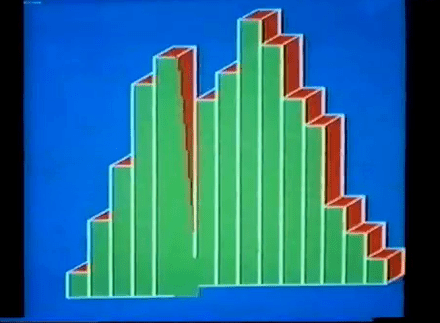
Justice-Involved Mental Illness- History
Mental health and mental illness has always proven to be a difficult topic to tackle, often with the symptoms being more invisible and neglected, and this is even more the case when it comes to offenders and others involved in the criminal justice system.
The most prominent difficulties are: diagnoses relying on full cooperation, many of the justice-involved population feigning mental issues, and a vast difference in screening practices and how professionals diagnose people over time passing and geographical area (Hector & Khey, 2022).
The types of data collection within this subfield are also more dispersed than uniform. Population surveys try to take a representative sample of the entire population to make generalizations; health care surveys come directly from healthcare and insurance providers, using both the Statistical Manual of Mental Disorders and the International Statistical Classification of Diseases and Related Health Problems; vital statistics are those including and relating to births, deaths, marriages and divorces, with the focus on deaths when discussing mental health.
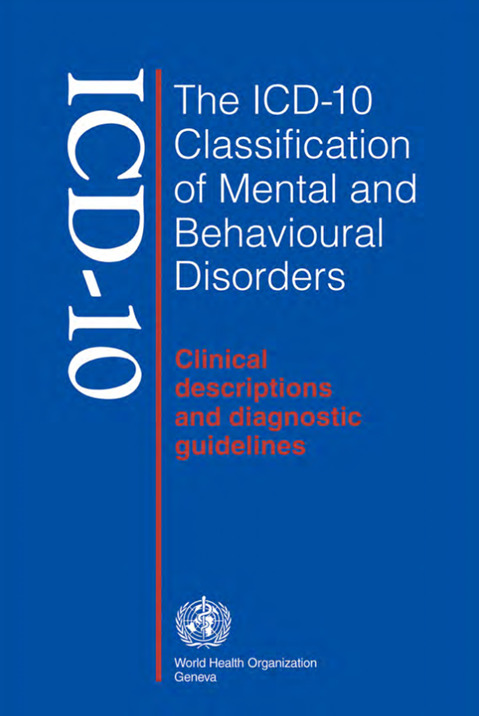
Data Importance
Without data, we cannot navigate through what to do with policy implications, whether it be if it is needed or not, or where to allocate the resources to most efficiently help those justice-involved individuals with mental health problems. Existing data can show the statistics for how many justice-involved individuals have mental health history, and based on that, we can develop policies to target it, and see the effectiveness of the policies, also through data.
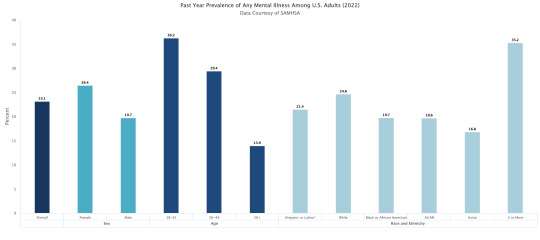
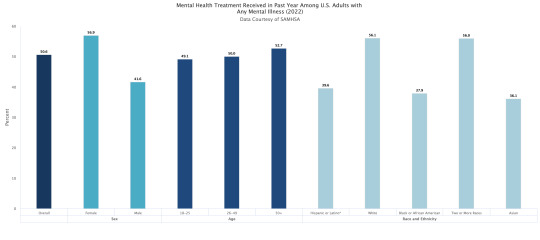
For example, the Substance Abuse and Mental Health Services Administration (2023) has plenty of data on the percentage of different demographic characteristics in relation to their struggles with mental health and their treatment, which we can use to implement policies to make treatment more accessible to those with mental illness.
References:
Hector, J. & Khey, D. (2022). Criminal Justice and Mental Health: An Overview for Students. 2nd Edition. Springer Publishing. ISBN: 978-3-031-15337-2
Substance Abuse and Mental Health Services Administration. (2023). Key substance use and mental health indicators in the United States: Results from the 2022 National Survey on Drug Use and Health (HHS Publication No. PEP23-07-01-006, NSDUH Series H-58). Center for Behavioral Health Statistics and Quality, Substance Abuse and Mental Health Services Administration. https://www.samhsa.gov/data/report/2022-nsduh-annual-national-report
12 notes
·
View notes
Text
MR4: How do you think celebrities, athletes, and/or corporations/organizations as champions for the cause impact the message? Positive or Negative? Why?

Stigma
Stigma can be described as the negative perceptions of someone or their actions as according to stereotypes, leading to discrimination (Hector & Khey, 2022). In the mental health sphere in particular, it can be divided into two main types:
social stigma: "public stigma" is the prejudice faced by those who struggle with mental health as a result of the label being placed upon them
self-stigma: "perceived stigma" is what the person who struggles with mental health themselves experience, often leading to shame and poorer treatment by others

Corporate/Oranizational Impact
The corporate workplace climate has done some to destigmatize mental health overall in recent years as diagnoses have risen in prevalence, but there is no such thing as perfection since everyone is impacted in unique ways.
Positive
Overall, organizational implementations do more good than harm, by adding protective measures and aids to new people that previously may have not been accommodated. For example, Employee Assistance Programs have helped in these ways (Bouzikos et al., 2022), including but not limited to:
reduction in psychological distress
clients' improvements
increased productivity
reduced absenteeism

References
Bouzikos, S., Afsharian, A., Dollard, M., & Brecht, O. (2022). Contextualising the Effectiveness of an Employee Assistance Program Intervention on Psychological Health: The Role of Corporate Climate. International journal of environmental research and public health, 19(9), 5067. https://doi.org/10.3390/ijerph19095067
Hector, J. & Khey, D. (2022). Criminal Justice and Mental Health: An Overview for Students. 2nd Edition. Springer Publishing. ISBN: 978-3-031-15337-2
11 notes
·
View notes
Text
MR3: Reflect on how the DSM-5-TR attempts to address overlapping symptoms compared to earlier versions of the DSM. What improvements have been made, and what challenges persist?

DSM-5-TR
The Diagnostic and Statistical Manual of Mental Disorders, or DSM is a handbook often used by psychological professionals to diagnose and discuss mental disorders. The DSM-5-TR, the revised version of the fifth edition of this manual, includes 541 mental diagnoses, and was published in 2022, making it the newest version of the most widespread book in the psychological field in modern times.

Improvements
behaviors not specifically linked to mental disorders were included as symptoms or correlates
there became more distinctions and different diagnoses as the editions of the DSM kept releasing
neurodevelopmental disorders shifted their wording to intellectual disability
Challenges
relies of symptomatology instead of underlying reasons behind the disorder (Kuriakose, 2020)
diagnoses are highly based on what patients report themselves, which can always have biases
based on current times when published, can never tell what may not be accurate based on future research or what may not be as politically correct decades from now

References
Shinu Kuriakose, DSM 5: Controversial Acceptance and Ongoing Challenges. 2020 - 7(4). AJBSR.MS.ID.001169.
9 notes
·
View notes
Text
MR2: Resilience plays a critical role in mitigating the effects of ACEs. What individual, family, societal, and historical factors most effectively foster resilience, especially within marginalized communities?
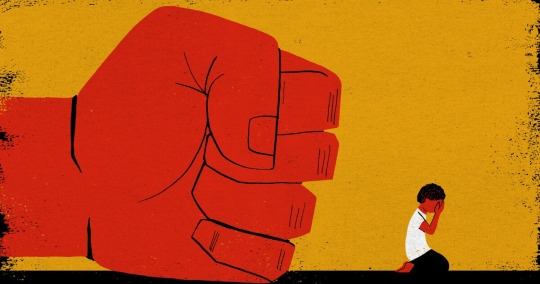
Adverse Childhood Experiences (ACE)
According to the Centers for Disease Control and Prevention (2019), adverse childhood experiences -- hereafter referred to as ACE -- are early incidents that are potentially traumatic occurring in childhood. It is often the result of violence, abuse, or having parents with substance misuse or mental health issues.

Resilience Factors
But, even though many childhood incidents can be identified as ACEs, this does not mean they are not preventable or treatable. Prevention can improve one's quality of life by lowering the risk for multiple health conditions (ACEs Aware, 2020), reducing risky behaviors, improving job and educational potential, and ceasing the cycle of intergenerational trauma.
It is of utmost importance to be resilient to overcome trauma and help ACEs not impact one's life too much. Here are some factors that can help people be resilient in the face of ACEs and intergenerational trauma:
Individual level: self-efficacy, coping skills, personal traits
Familial level: stable caregiving, family cohesion
Societal/community level: social supports, trauma-informed care (McLennan et al., 2019), access to community resources

References
ACEs Aware (April, 2020). ACE screening clinical workflows, ACEs and toxic stress risk assessment algorithm, and ACE-associated health conditions: For Pediatrics and Adults. Retreived from https://www.acesaware.org/wp-content/uploads/2019/12/ACE-Clinical-Workflows-Algorithms-and-ACE-Associated-Health-Conditions-ADA.pdf.
Centers for Disease Control and Prevention (U.S.) (2019). Adverse childhood experiences (ACEs) : preventing early trauma to improve adult health.
McLennan, J. D., MacMillan, H. L., & Afifi, T. O. (2020). Questioning the use of adverse childhood experiences (ACEs) questionnaires. Child abuse & neglect, 101, 104331. https://doi.org/10.1016/j.chiabu.2019.104331
6 notes
·
View notes
Text
MR1: Reflecting on this chapter discussion of Dorothea Dix, how do you think she would be involved in mental health advocacy and/or reform in our current times?

Background
Dorothea Dix was an important figure in the field of social reform, specializing her efforts in mental health after seeing the horrors many mentally ill people faced while receiving residency, such as in jails and prisons across the state of Massachusetts. In such places as well as the asylums of the time, the mentally disordered individuals were commonly subject to abuse and inhumane treatment (Parry, 2006).
Noting this, Dix would take her findings to the courts and incite change in how the laws regarding "the idiots, lunatics, and insane persons, not furiously mad" (Hector & Khey, 2022) in state and local institutions. This culminated when she lay witness to the Worcester State Hospital and how new laws required specialists to attend to the mentally ill rather than normal employees of such institutions. Dix continued by petitioning to other states for similar moral treatment of the people living in these establishments.

Modern Reflecting
If Dorothea Dix was around in current day, her mental health advocacy and reform would be rooted in inciting change through action rather than just by word of mouth. This could be by:
publicly backing candidates with policies that match her values
suggesting private policies to individual institutions to make them run smoother
campaigning against those who try to strip the rights of those with mental disabilities
support those researching into treatments and prevention methods for often overlooked conditions

References
Hector, J. & Khey, D. (2022). Criminal Justice and Mental Health: An Overview for Students. 2nd Edition. Springer Publishing. ISBN: 978-3-031-15337-2
Parry M. S. (2006). Dorothea Dix (1802–1887). American Journal of Public Health, 96(4), 624–625. https://doi.org/10.2105/AJPH.2005.079152
12 notes
·
View notes